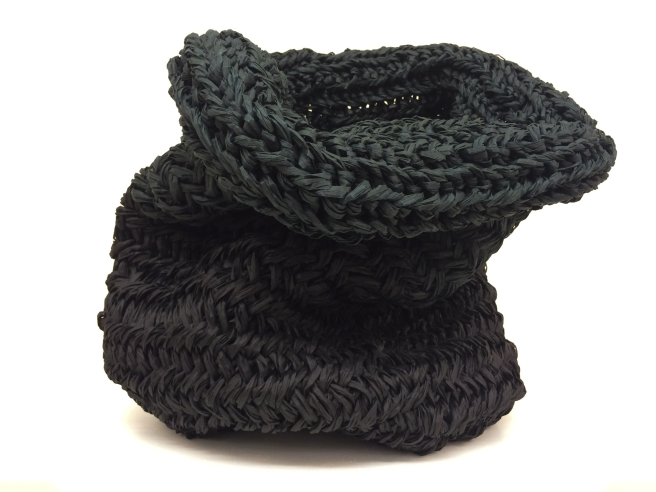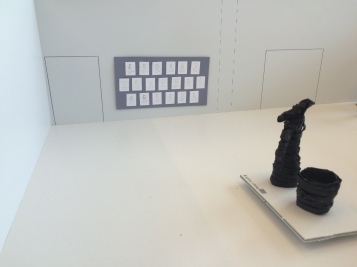
This basket is the result of my experimental and in depth work with paper yarns and knitting during the autumn semester 2015 as a third year student on the Bachelor’s Programme.
My work explores knitting, a traditional crafts technique, with non traditional materials in search of shapes, structures and function. Knitting is brought to another context than the traditional by the use of my hands. When knitting loops are formed by the thread. The loops create a surface or a kind of map of traces. My trace.
My products serve as reminders of traditional craft combined with modern materials and are intended for both domestic and public settings. The basket is knitted with fish bone technique and with five folded paper yarn.
Inspired by the words below by Tim Ingold, our class chose the theme Lines, Threads and Traces for our showcase #VHÖ:09 at the Stockholm Furniture & Light Fair 2016, February 9-13. My basket is my contribution to our class’s showcase in Stockholm.
But just as humans are, par excellence, makers and users of threads, so have they also come into their own as makers of traces with the hands.
Tim Ingold (2007, Lines, a brief history, p. 43)
I believe that our world is filled with traces of humans and our ancestors. Traces such as buildings, a piece of music, a farmers field, a pair of knitted mittens or the memory of your lovers gentle caress. Visible traces or invisible deposits from meetings with other humans. Our world consists of layers of deposits by previous generations intertwined with our planet Earth.
Reading Tim Ingolds words above about humans “as makers of traces with the hands”, I come to think of how important it is to give people the ability to use their hands, in order to solve problems. I believe that in society today, many people have forgot, or lost an important part of being human, using their hands to solve problems or make things. I believe that the ability to solve problems with your own hands, and make, or mend your things, strengthens you as a human being. It also brings more happiness into your life in the process. The joy of being able to solve your own problems. In the future I want to help other people for example by helping them learn how sew or to knit.






 Veckan före påsk presenterade vi vår utställning för Östergötlands museum och fick positiv respons av dem.
Veckan före påsk presenterade vi vår utställning för Östergötlands museum och fick positiv respons av dem.


